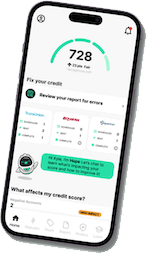How Long Does It Take to Get Approved for A Mortgage?

Buying a home is exciting—but the mortgage process? Not so much. Whether you’re just starting with pre-approval or already deep into paperwork, this guide walks you through each step of getting approved for a mortgage. Learn how your credit, documents, and lender communication can impact the timeline—and how to move things along faster.
Buying a home is an exciting milestone—but let’s face it, the approval process can feel like a maze. Whether you’re a first-time home buyer or a seasoned homeowner, one of the most common (and important) questions is: How long does it actually take to get approved for a mortgage?
The answer isn’t one-size-fits-all. From pre-approval to closing, the timeline can vary depending on your credit, income, and how organized you are. In this guide, we’ll break down every step of the approval process so you know what to expect—and how to speed things up.

So, Really—How Long Does It Take?
The short answer? Approval can take anywhere from a few days to over a month. But the real answer? That depends on your situation. Are you working on pre-approval or full approval? Are you prepared with all of financial details? How’s your credit? Are you working with a responsive mortgage lender? Each of these can speed up or slow down the mortgage application process.
Don’t be afraid to spend time looking at multiple lenders, as many people use the same lender to get pre-approved and complete their home loan. Lender reviews can help you find the right mortgage lender.
Understanding the Mortgage Pre-approval Process
Many buyers confuse mortgage pre-approval with actual mortgage approval, but they’re not the same thing. Mortgage pre-approval happens before you even find a home. A loan officer will review your income, credit score, and financial history to give you a rough estimate of how much you’re eligible to borrow and your estimated closing costs. A pre-approval letter provides a budget and demonstrates to sellers that you’re serious about your offer.
Mortgage Pre-approval vs. Full Application: What’s the Difference?
The mortgage pre-approval process is more of a preliminary check to gauge your eligibility for a home loan. It’s based on a brief review of your financial information, including income, debt, and credit score. Once pre-approved, you’ll have an idea of the loan amount you qualify for, which helps you focus your home search on a specific purchase price with your real estate agent. You’ll also be given a mortgage pre-approval letter which shows sellers real estate agents that you’re a qualified buyer.
The full application, however, is more detailed, comprehensive and can be a lengthy process. After you’ve found a home and had your offer accepted, you’ll officially apply for the home loan. This includes submitting additional documentation, undergoing a home appraisal, and entering the underwriting phase, where your financial health is scrutinized more rigorously.
While mortgage pre-approval gives you a rough idea of how much you qualify for and how much of a down payment you will need, the application is where the full picture comes together for your home loan. One is just a pre-approval letter and the other is a full loan approval.
The Mortgage Pre-approval Process: A Quick Snapshot
Typically, mortgage pre-approval takes anywhere from one to three business days. If your financial situation is straightforward and you provide all the necessary documents immediately, pre-approval can be completed in just a day. However, if you have more complex financials, like inconsistent income, self-employment, or credit issues, mortgage pre-approval takes longer.
For pre-approval, you’ll need to submit several financial documents, including:
- Your last two pay stubs
- Two years of W-2s or 1099s
- Recent bank statements
If you’re self-employed, you may also need:
- Two years of tax returns
- Profit-and-loss statements
You’ll also need to authorize a credit check and provide a government-issued ID during the home buying process. Being organized and having these documents ready can save you valuable time in the process.
Navigating the Mortgage Application and Underwriting
Once you’re pre-approved and your offers accepted, it’s time to move into the official application process for your home loan. Filling out the mortgage application itself can be pretty quick—sometimes taking less than an hour if your paperwork is already in order. But this step kicks off a much more involved process known as underwriting.
What Is Underwriting?
The underwriting process is the most rigorous and time-consuming phase of approval. This is when your lender evaluates all your financials in detail, verifies the property value through an appraisal, and double-checks everything in your file.
This stage usually takes one to two weeks, but it can stretch to three weeks or more if your application is complicated or if you’re slow to respond to documentation requests.
Common Causes of Delays
Delays can be caused by various factors, including:
- Missing or incomplete paperwork
- Inconsistent income
- Unexplained large bank deposits
- Discrepancies on your credit report
The appraisal process can also slow things down, especially if the appraiser finds issues with the property or it doesn’t come in at the expected value.
To avoid these delays, staying organized and being proactive is key.
Staying Organized Throughout the Process
The process can quickly become overwhelming, but staying organized can make a huge difference in speeding things up and avoiding delays. Here are a few tips to help you stay on track:
Create a Mortgage Checklist
Having a list of required documents can save you time and stress when applying for a mortgage loan. These typically include:
- Pay stubs (last two)
- Tax returns (last two years)
- Bank statements (last two to three months)
- W-2s or 1099s
- Identification (driver’s license, passport)
- Proof of employment (if needed)
By preparing these documents in advance, you’ll avoid the scramble to find them when they’re requested by your lender.
Track Deadlines and Key Dates
It’s crucial to keep track of when you need to submit certain paperwork, as well as any deadlines for scheduling your appraisal or home inspection. You can create a simple timeline or use apps like Trello or Google Calendar to mark deadlines and keep the process organized.
Stay in Touch with Your Lender
Regularly communicate with your lender, especially if any issues arise. Being responsive to requests for additional information or documentation can prevent any unnecessary delays. For example, Dovly’s mortgage engine can help you stay on top of the approval process by connecting you with compatible lenders and highlighting what steps to take next—so you’re better prepared to submit paperwork promptly and stay on track.
Use Credit Monitoring Tools
The process can also be a time to check up on your credit. Using credit optimization tools ensures that you’re always aware of your credit score. This is helpful not only for improving your score but also for making sure that any credit errors are resolved before your loan application reaches underwriting.
By staying organized and using the right tools, you’ll keep your mortgage process as smooth as possible, helping you get closer to that “clear to close” status.
How Your Credit Impacts Your Approval and Rates
Your credit is one of the most significant factors that impact the approval process whether you are trying to get pre-approved or not. Most lenders use your score to assess your risk as a borrower and determine the interest rate you’ll receive. Generally, the higher your credit score, the lower the rate and the better the terms on your loan. If you have a lower score, you may even be required to put down a larger down payment. Here’s a closer look at how your credit affects approval:
How Your Credit Affects Interest Rates
A higher credit score typically means you’re a lower-risk borrower, and this can lead to better loan terms, including a lower rate. For example:
- A score of 740 or higher often qualifies for the best rates, saving you thousands over the life of the loan.
- A score of 620 to 739 may still qualify for a mortgage but will likely face higher interest rates and more stringent terms.
- A score of below 620 can make it more challenging to qualify for a conventional loan, and you may be offered higher rates or be required to take out an FHA loan.
The Role of Your Credit Report in Approval
Beyond the score itself, the details on your credit report can also affect your approval. Lenders look at your credit history for things like:
- Credit utilization: High balances on credit cards may signal to lenders that you rely too heavily on credit, which could be a red flag.
- Payment history: Late or missed payments, especially in the last two years, can negatively impact your chances of securing a mortgage.
- Recent credit inquiries: Multiple inquiries in a short period can suggest financial instability, which could raise a red flag for lenders.
How to Improve Your Credit Before Applying
Even if your credit score isn’t where you want it to be, there are ways to improve it before applying for a mortgage:
- Pay down debt: Focus on paying off credit cards with high balances or higher interest rates. Reducing your credit card balances below 30% of your available credit can have a significant impact on your score.
- Dispute errors on your credit report: Sometimes, incorrect information on your credit report can lower your score. Tools like Dovly’s credit engine help you identify and correct errors quickly and efficiently.
- Avoid new credit inquiries: Don’t apply for new credit cards or new loans in the months leading up to your mortgage application. Multiple inquiries can negatively impact your score.
- Settle any outstanding debts: If you have collections or past due accounts, work to settle or pay them off before applying for a mortgage.
Tools like Dovly’s credit optimization engine can help you not only identify areas for improvement but also provide personalized steps to boost your score. By resolving inaccuracies, improving your credit habits, and raising your score before applying for a mortgage, you can qualify for a lower rate and secure more favorable terms.
From Final Approval to Closing: The Home Stretch
Once underwriting wraps up and your lender is satisfied with every detail, you’ll receive what’s called a “clear to close.” This means your loan is officially approved, all necessary conditions have been met, and you’re ready to move forward with closing. It’s the lender’s final green light that signals you’re almost at the finish line.
With the clear to close in hand, you can schedule your closing date—usually within three to seven business days. During this final phase, you’ll confirm all final documentation, wire any required funds such as down payment, settle closing costs, and, finally, sign the paperwork that makes your home purchase official. It may feel like the longest wait of the process, but it’s also the most exciting. Soon after signing, you’ll receive the keys to your new home and can begin the next chapter of your journey.
The Mortgage Timeline at a Glance
To recap, here’s how the mortgage process typically breaks down—and what happens at each step:
- Pre-approval: 1–3 days
A quick review of your income, credit, and financials to determine your budget and show sellers you’re a serious buyer. - Application: Less than a day
The official paperwork kicks off your mortgage file. If you’re organized, this step can be done in under an hour. - Underwriting: 7–21 days
The most detailed and time-consuming phase. Your financial history is verified, the home appraisal is done, and all documentation is thoroughly reviewed. - Final Approval: 2–7 days
After underwriting, the lender issues a “clear to close,” confirming you’re fully approved and ready to finalize the loan. - Closing: 3–7 days
This is when everything becomes official. You’ll sign final documents, transfer funds, and get the keys to your new home.
So from start to finish, the approval process generally takes 2 to 5 weeks—though this timeline can vary depending on how prepared you are, how quickly you respond to your lender, and the complexity of your financial profile.
Want to speed things up? Staying organized, responding promptly, and optimizing your credit score ahead of time—especially with tools like Dovly—can help you sail through the process with fewer delays.

Wrapping Up: Your Road to Approval
Getting approved for a mortgage doesn’t have to be a waiting game filled with guesswork. By understanding each step—from pre-approval to closing—you can take control of the timeline and make smarter financial decisions along the way.
The secret? Be proactive, stay organized, and make sure your credit is in great shape. Tools like Dovly’s automated credit engine and mortgage platform can give you the edge you need to secure faster approval and better rates.
Ready to move forward with confidence? Take the first step toward homeownership today—optimize your credit with Dovly and make your dream home a reality.
Frequently Asked Questions



